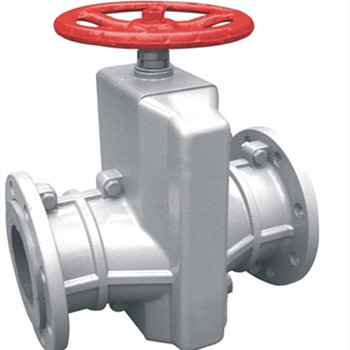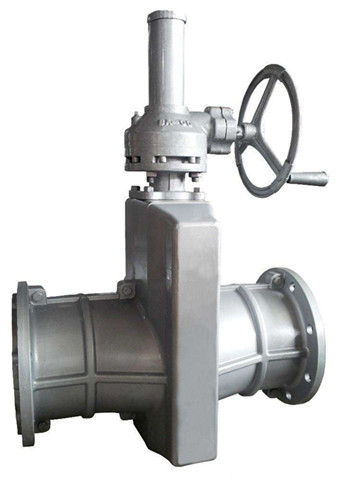What’s pinch valve?
Pinch valve, also known as hose valve, is a unique structure of the valve that consists of aluminum alloy/cast steel body, rubber sleeve, valve stem gate, guide pillar and other parts. With the features of convenient opening, good sealing performance and cost-saving, the pinch valve is an economical alternative to a gate valve, globe valve and regulating valve, which can extend the5-10 times of service life than that of conventional valves, suitable for conveying system of granular slurry or chemical medium in low-pressure pipeline.
 The rubber sleeve is the core part of the pinch valve, which can be replaced regularly, saving cost, with excellent corrosion resistance, wear resistance and good bearing pressure. There are several sleeve materials can be selected according to the corrosiveness and abrasiveness of the flow media, and the operating temperature. The EPDM rubber pinch valve is designed for the higher temperature environment, which needs to be within the limit of the polymer. In addition, electric, pneumatic, manual or hydraulic actuator drives the sleeve to achieve opening, close and adjusting action.
The rubber sleeve is the core part of the pinch valve, which can be replaced regularly, saving cost, with excellent corrosion resistance, wear resistance and good bearing pressure. There are several sleeve materials can be selected according to the corrosiveness and abrasiveness of the flow media, and the operating temperature. The EPDM rubber pinch valve is designed for the higher temperature environment, which needs to be within the limit of the polymer. In addition, electric, pneumatic, manual or hydraulic actuator drives the sleeve to achieve opening, close and adjusting action.
The principle of pinch valve
For a manual pinch valve, when the handwheel turns, the stem forces the internals to force the rubber sleeve and the gate to reciprocate between the guide pillars to close the valve. Similar principle for the pinch valve with actuator, the force pushing down onto the rubber sleeve which fully collapses and closes tightly.
 The features of pinch valve
The features of pinch valve
- Full port or bore, no obstruction
- Low flow resistance, sleeve self-cleaning
- Zero leakage can be closed when there are residual particles;
- No clogging or dead spots to prevent valve operation
- Simple design, not affected by the external environment.
- Replaceable elastomer sleeve, low and easy maintenance cost.
The applications of pinch valve
Pinch valves are commonly used in the pipeline transportation of some corrosive chemical media, or abrasive solid or liquid products such as particles, fibers, powders and mortar. It can also be used in sewage processing such as sludge treatment, gravel cleaning, raw sewage, lime, charcoal. The typical application including:
Power plant: FDG system, ash removal system, coal transport;
Mining: Tailings filling, flotation control, mud line, or other slurries;
In addition, it is also widely used in cement, glass, paper manufacturing, electronics industry, food industry, and industrial sewage and other fields.



Leave a Reply
Want to join the discussion?Feel free to contribute!